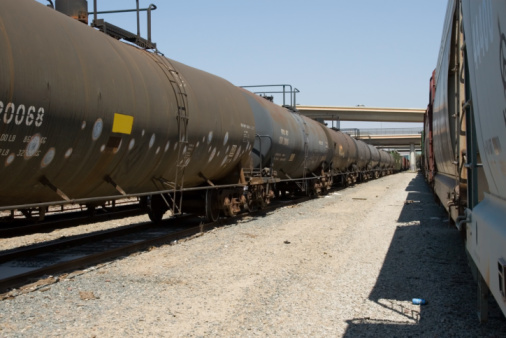Published on Journal Star by Nicholas Bergin.
Opponents of the controversial Keystone XL pipeline say recently released data on oil shipments by rail undermine the argument that the proposed project would displace rail as a safer means of moving crude.
The U.S. Department of Energy last week released a first monthly report on the movements of crude oil by train, which showed that only a small percentage of the tankers crossing North America move oil along the path the Keystone XL would take from Western Canada to refineries along the U.S. Gulf Coast.
“While there has been a crude by rail boom, it does not involve tar sands by rail to the Gulf,” said Anthony Swift, an attorney with the environmental advocacy group Natural Resources Defense Council.
“That means Keystone isn’t going to displace tar sands by rail. It’s going to enable new production to come online and head to the Gulf Coast,” Swift said. “That means we can’t ignore the climate impacts and other environmental impacts associated with tar sands expansion.”
Environmentalists say the pipeline would contribute to global warming emissions and hasten destruction of Canadian wilderness.
Some supporters of TransCanada’s proposed pipeline that would be able to move up to 830,000 barrels of oil a day are calling the issue a distraction.
“I would not read anything dramatic into these numbers,” said Brigham McCown, an industry consultant and former administrator of the U.S. Pipeline and Hazardous Materials Safety Administration.
“We’re still getting oil from Canada. We’re getting more oil from Canada than any other place outside the U.S.”
The United States imported 123 million barrels of petroleum from Canada in January, almost 16.7 million barrels more than was imported during the same month the year before, according to the U.S. Energy Department.
Western Canada’s rail loading capacity, which was 200,000 barrels per day in 2013, is expected to hit a million barrels a day by the end of this year, according to TransCanada.
McCown said pipelines remain the safest way to move oil.
“When it comes to pipelines, I’d much rather move this oil on a brand new highly scrutinized pipeline versus the Platte pipeline … that has been in place since the 1950s,” he said.
The Energy Department’s numbers show the majority of oil being shipped in the United States by rail is going from the Bakken oil fields in North Dakota to refineries on the East and West coasts.
Only about 5 percent of the oil moved by train in January went from Canada or the Midwest to the Gulf Coast, which has about 45 percent of the nation’s refining capacity.
TransCanada has contracts to move 65,000 barrels of Bakken oil a day from Baker, Montana, and would have capacity of up to 100,000 barrels.
Opponents question whether that capacity will get used.
TransCanada, which is based in Calgary, Alberta, says the case for the 1,700-mile pipeline remains strong. It would run from Canada to Steele City near the Nebraska-Kansas border, where it would meet up with existing pipelines leading to Gulf Coast refineries.
“While it continues to be delayed, there is absolutely no doubt that the crude oil that would be shipped on KXL is finding its way to market,” TransCanada spokesman Davis Sheremata said in an email.
Sheremata added that oil moved by the Keystone XL would displace heavy crude being supplied to Gulf Coast refineries from Venezuela and Mexico.
TransCanada is defending its process for using eminent domain to build the pipeline in Nebraska against landowner lawsuits. The issue is expected to eventually reach the state Supreme Court.






